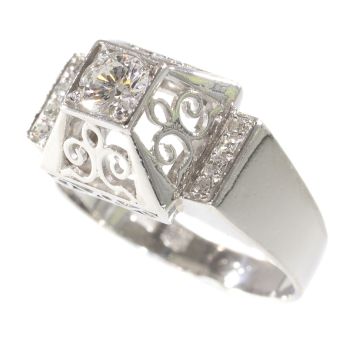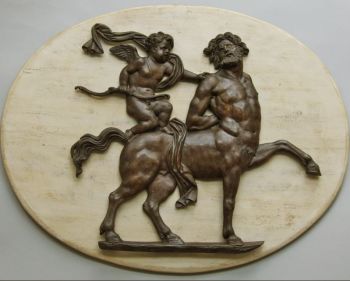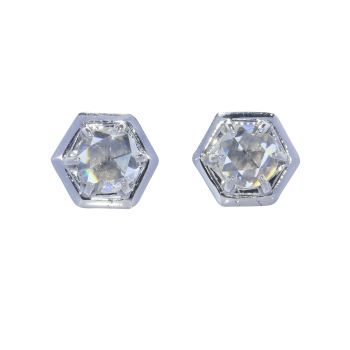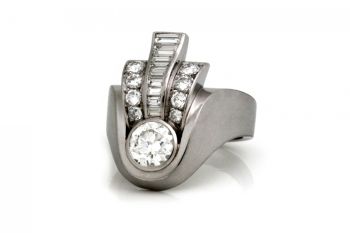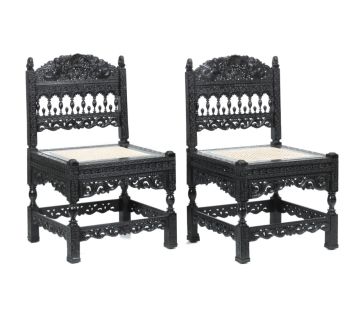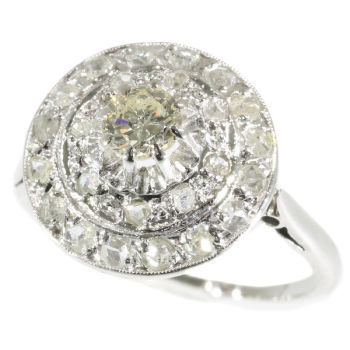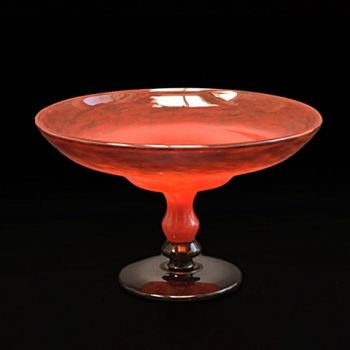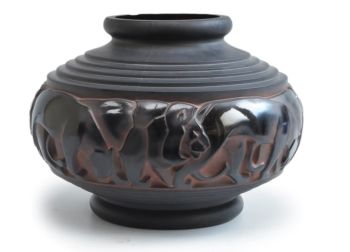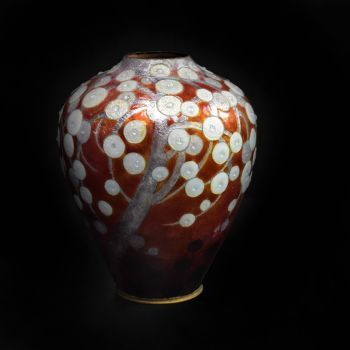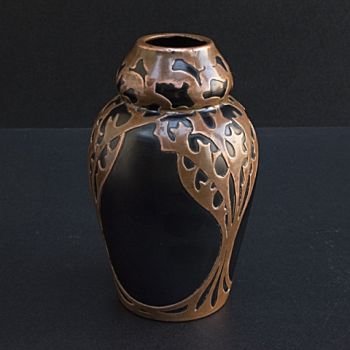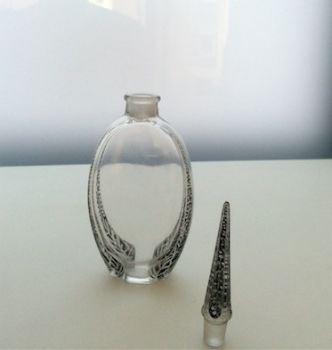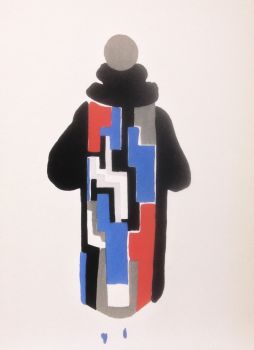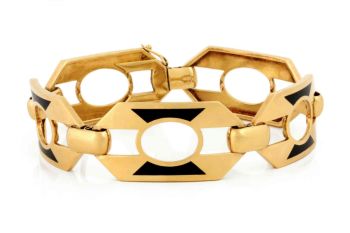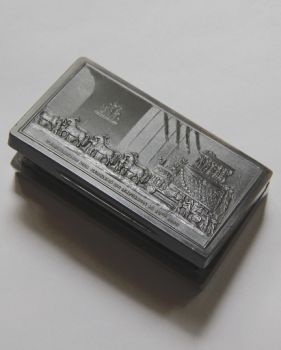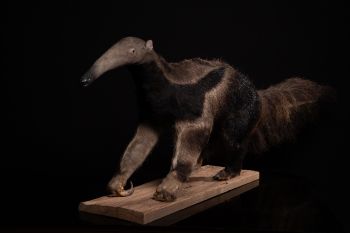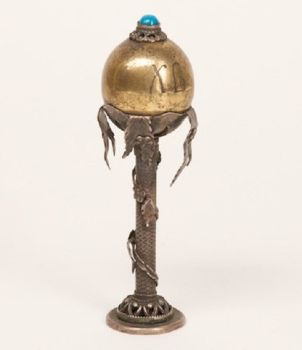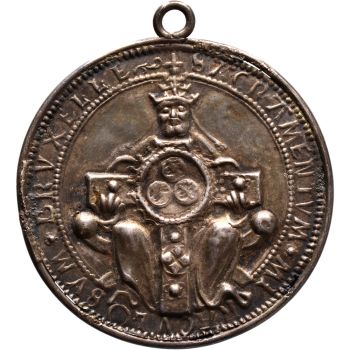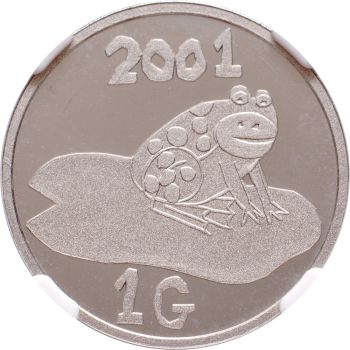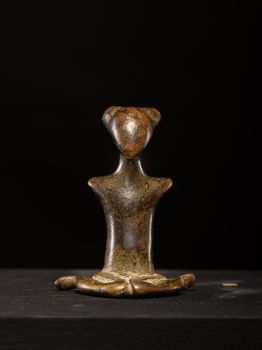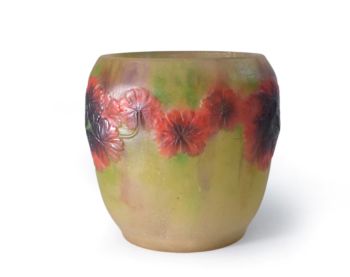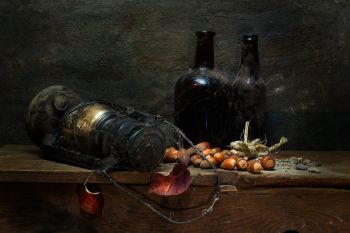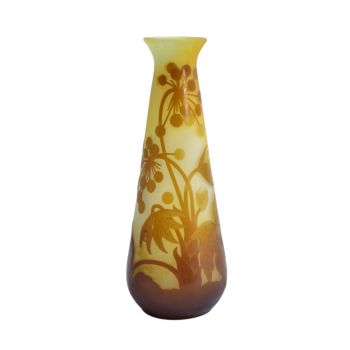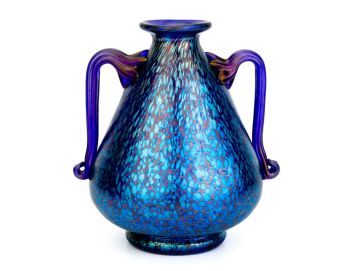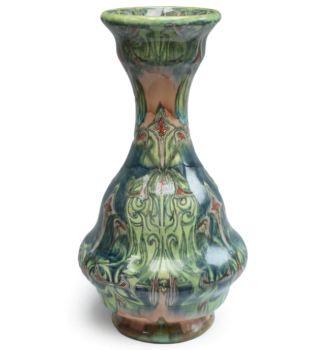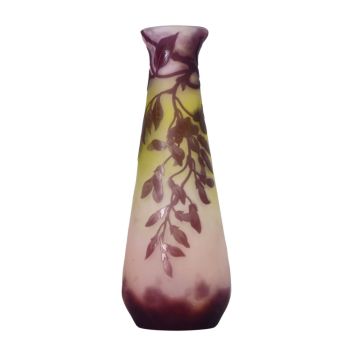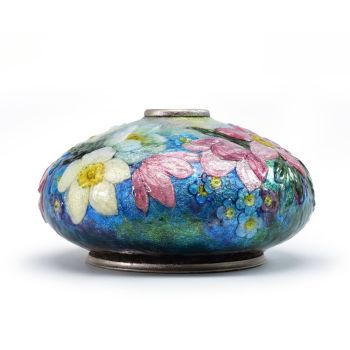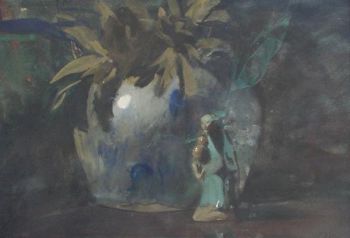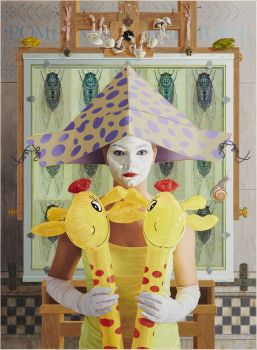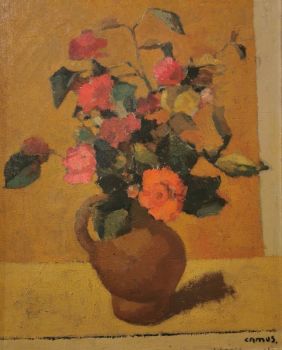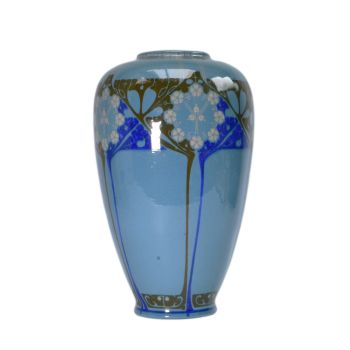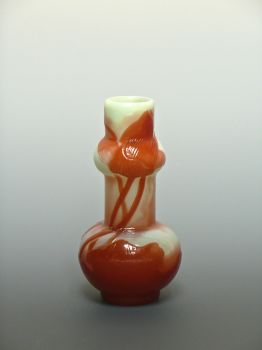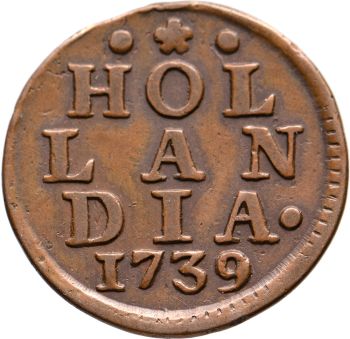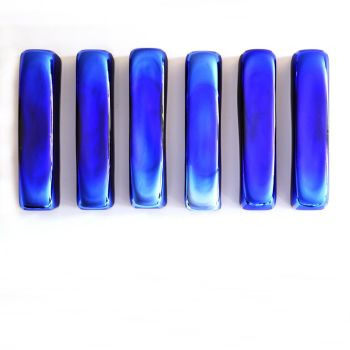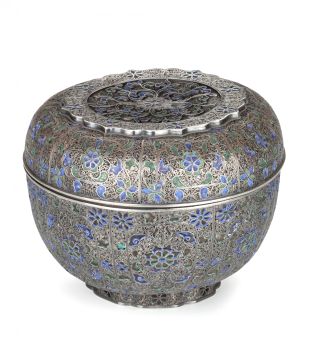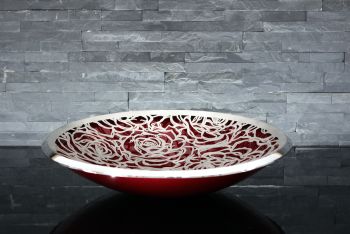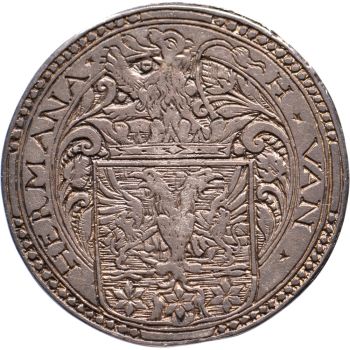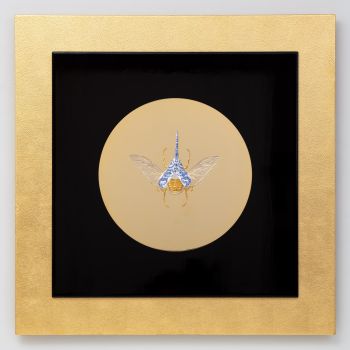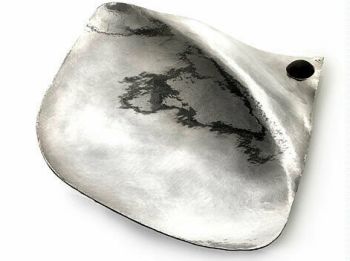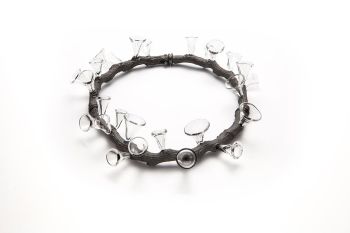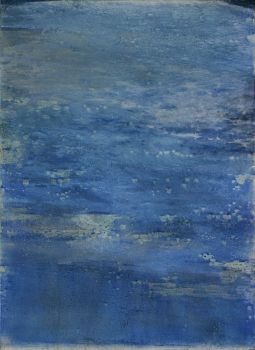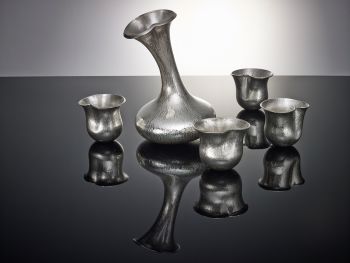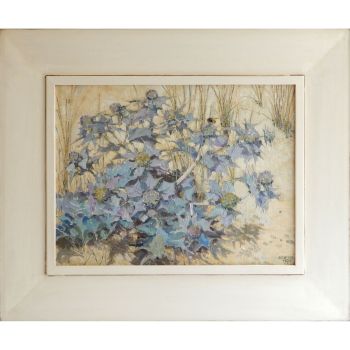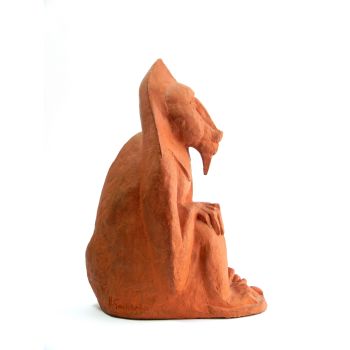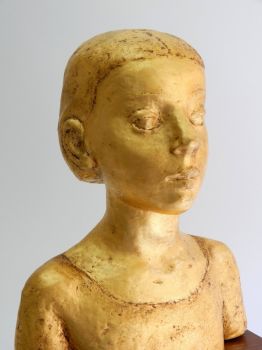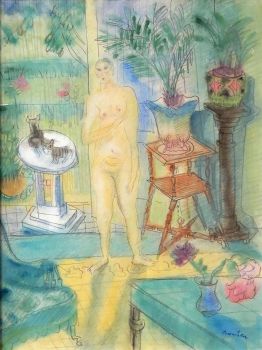Japanese art deco lacquervase with Scarab beetle motif 1920 - 1950
Unbekannter Künstler
SilberChinesischer LackLack
17 cm
ConditionExcellent
Preis auf Anfrage
Dille Art
- Über KunstwerkSometimes we come across something that doesn't directly fit into our collection but still resonates with it.
This beautiful and rare Japanese vase is a perfect example, and we found it to be a valuable addition to our collection.
The vase can be considered as Japanese Art Deco. Japan was also influenced by the Art Deco style through film, design, fashion, and more. Thus, Japanese artists began incorporating their own Art Deco elements into their designs. In the 1920s, after the discovery of the pharaohs' tombs, there was a worldwide Egyptian revival, also in Japan. Various Egyptian motifs, such as the scarab beetle, could be found in fashion, advertising campaigns, and applied art like this vase.
Officially, this period in Japan falls within the Showa era (1926-1989). The vase is made in the traditional manner with a wooden base, followed by several layers of lacquer. Various techniques were applied to achieve the vase's current appearance.
During that period, there was a very famous lacquer artist, Nishimura Hikobei VIII (1886-1965), who, as the 8th in his generation, wanted to secure his succession and founded a school in 1926, the Kyoto Maki-e Art School. To clarify, this vase is not signed by Nishmura Hikobei VIII, but it was likely made by one of his students. The solid silver neck rim, for example, is an element also found in vases made by this master.
The shape of the vase is unusual, and the maker used little silver and gold in the decoration, a technique called Maki-e, only in the gold dots and silver lattice edge of the decoration. The three large reddish-brown scarabs, in relief among the reeds, attract all the attention. Combined with the simple chic silver rim and the sleek design, this makes the vase so uniquely stylish and artistic in its simplicity, precisely what Art Deco stands for.
The vase comes from Tokyo, and amusingly, there was an old Japanese card for a social ceremony in Keito, Kyoto, in the accompanying box. The address no longer existed. It was an old card. The Kyoto Maki-e Art school was also located in old Kyoto
Literature:
In 2014, there was a major exhibition at the Seattle Art Museum about this unique stylistic period in Japanese culture, showcasing 'the Levenson Collection', a special collection focused on Japanese Art Deco
style within Japanese art and culture between 1920-1945.
Below the very well written and informative book cq catalogue.
- Kendall Brown, Takanami Machiko; 'Deco Japan, Shaping Art & Culture 1920-1945', Alexandria, Va. Art Services International, 2012.
Meisurements:
- Height 17 cm. (6,69")
- Neck diameter: 13,5 cm. (5,31")
- Foot diameter: 10,8 cm. (4,25")
- Waist circumference: 65 cm (25,59") - Über Künstler
Es kann vorkommen, dass ein Künstler oder Hersteller unbekannt ist.
Bei einigen Werken ist nicht zu bestimmen, von wem sie hergestellt wurden, oder sie wurden von (einer Gruppe von) Handwerkern hergestellt. Beispiele sind Statuen aus der Antike, Möbel, Spiegel oder Signaturen, die nicht klar oder lesbar sind, aber auch einige Werke sind überhaupt nicht signiert.
Außerdem finden Sie folgende Beschreibung:
•"Zugeschrieben …." Ihrer Meinung nach wohl zumindest teilweise ein Werk des Künstlers
•„Atelier von ….“ oder „Werkstatt von“ Ihrer Meinung nach eine Arbeit, die im Atelier oder in der Werkstatt des Künstlers, möglicherweise unter seiner Aufsicht, ausgeführt wurde
•„Kreis von ….“ Ihrer Meinung nach ein Werk aus der Zeit des Künstlers, das seinen Einfluss zeigt, eng mit dem Künstler verbunden, aber nicht unbedingt sein Schüler
•"Art von …." oder „Anhänger von ….“ Ihrer Meinung nach eine Arbeit, die im Stil des Künstlers ausgeführt wurde, aber nicht unbedingt von einem Schüler; kann zeitgenössisch oder fast zeitgenössisch sein
•„Art von ….“ Ihrer Meinung nach ein Werk im Stil des Künstlers, aber späteren Datums
•"Nach …." Ihrer Meinung nach eine Kopie (jegliches Datums) eines Werks des Künstlers
• „Unterzeichnet …“, „Datiert …“. oder „Beschriftet“ Ihrer Meinung nach wurde das Werk vom Künstler signiert/datiert/beschriftet. Das Hinzufügen eines Fragezeichens weist auf einen Zweifel hin
• „Mit Unterschrift …“, „Mit Datum …“, „Mit Aufschrift ….“ oder „Trägt Unterschrift/Datum/Beschriftung“ ihrer Meinung nach die Unterschrift/Datum/Beschriftung von jemand anderem als dem Künstler hinzugefügt wurde
Sind Sie daran interessiert, dieses Kunstwerk zu kaufen?
Artwork details
Related artworks
Unbekannter Künstler
Two Centaurs, France or Italylate 18th
Preis auf AnfrageRobert Schreuder Antiquair
1 - 4 / 12Amalric Walter
Amalric Walter & Henri Bergé – Crabe plumier1920 - 1929
Preis auf AnfrageAntiques Emporium
1 - 4 / 24Unbekannter Künstler
Silber Russische Präsentation Osterei1880 - 1899
Preis auf AnfrageH.W.C. Dullaert Art & Antiques Dealer
Unbekannter Künstler
An Indian part-gilt silver-clad ceremonial sceptre or mace with a tiger’s head1850 - 1900
Preis auf AnfrageZebregs & Röell - Fine Art - Antiques
 Kuratiert von
Kuratiert vonDanny Bree
1 - 4 / 24Johann Loetz (Lötz) Witwe Klostermühle
Johann Loetz Witwe – Jugendstil Cobalt Papillon vaas1900 - 1910
Preis auf AnfrageAntiques Emporium
Unbekannter Künstler
A Japanese bronze Hu flower vase, Edo / Meiji, 19th century19th century
Preis auf AnfrageMenken Works of Art
Herman Bogman jr.
Flower still life of a nasturtium in a blue vase1950 - 1965
Preis auf AnfrageAdelwein Kunst
Johann Loetz (Lötz) Witwe Klostermühle
Johann Loetz Witwe – Ausfuehrung 146 Titania vase – 19121910 - 1919
Preis auf AnfrageAntiques Emporium
Paulus Franciscus Kromjong
Blumen vor Arearea Aka (Freude) von Gauguin '20th century
Preis auf AnfrageZebregs & Röell - Fine Art - Antiques
Jan Voerman sr
Still Life with flowers in a Chinese figurine1850 - 1900
Preis auf AnfrageKunsthandel Pygmalion
1 - 4 / 24Unbekannter Künstler
A rare Japanese export lacquer medical instrument box1650 - 1700
Preis auf AnfrageZebregs & Röell - Fine Art - Antiques
Samuel Dejong
Anatomia Blue Heritage, Hercules Open2017 - 2019
Preis auf AnfrageVilla del Arte Galleries
 Kuratiert von
Kuratiert vonGallerease Magazine
1 - 4 / 24- 1 - 4 / 12






